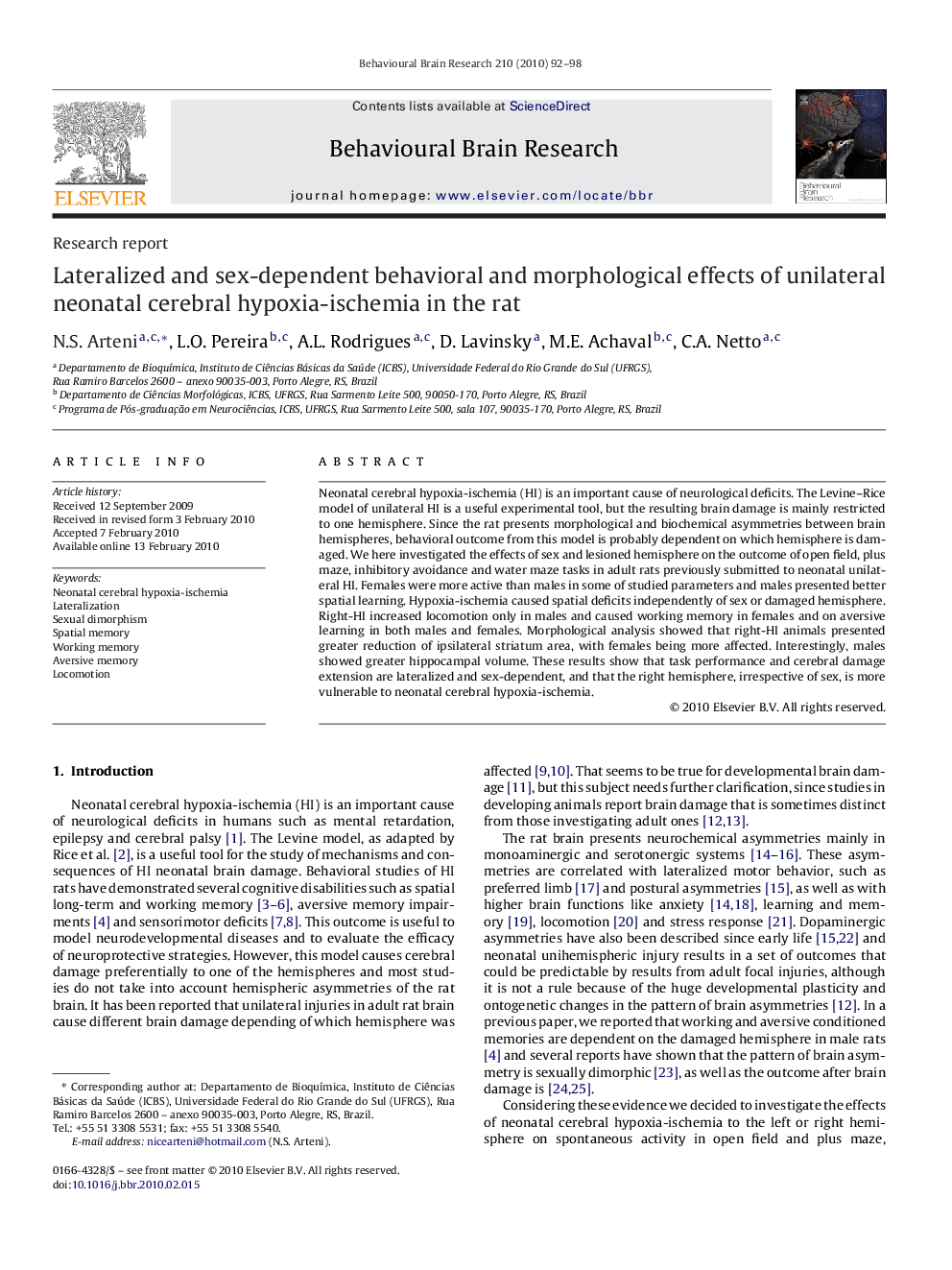| Article ID | Journal | Published Year | Pages | File Type |
|---|---|---|---|---|
| 6260126 | Behavioural Brain Research | 2010 | 7 Pages |
Neonatal cerebral hypoxia-ischemia (HI) is an important cause of neurological deficits. The Levine-Rice model of unilateral HI is a useful experimental tool, but the resulting brain damage is mainly restricted to one hemisphere. Since the rat presents morphological and biochemical asymmetries between brain hemispheres, behavioral outcome from this model is probably dependent on which hemisphere is damaged. We here investigated the effects of sex and lesioned hemisphere on the outcome of open field, plus maze, inhibitory avoidance and water maze tasks in adult rats previously submitted to neonatal unilateral HI. Females were more active than males in some of studied parameters and males presented better spatial learning. Hypoxia-ischemia caused spatial deficits independently of sex or damaged hemisphere. Right-HI increased locomotion only in males and caused working memory in females and on aversive learning in both males and females. Morphological analysis showed that right-HI animals presented greater reduction of ipsilateral striatum area, with females being more affected. Interestingly, males showed greater hippocampal volume. These results show that task performance and cerebral damage extension are lateralized and sex-dependent, and that the right hemisphere, irrespective of sex, is more vulnerable to neonatal cerebral hypoxia-ischemia.
